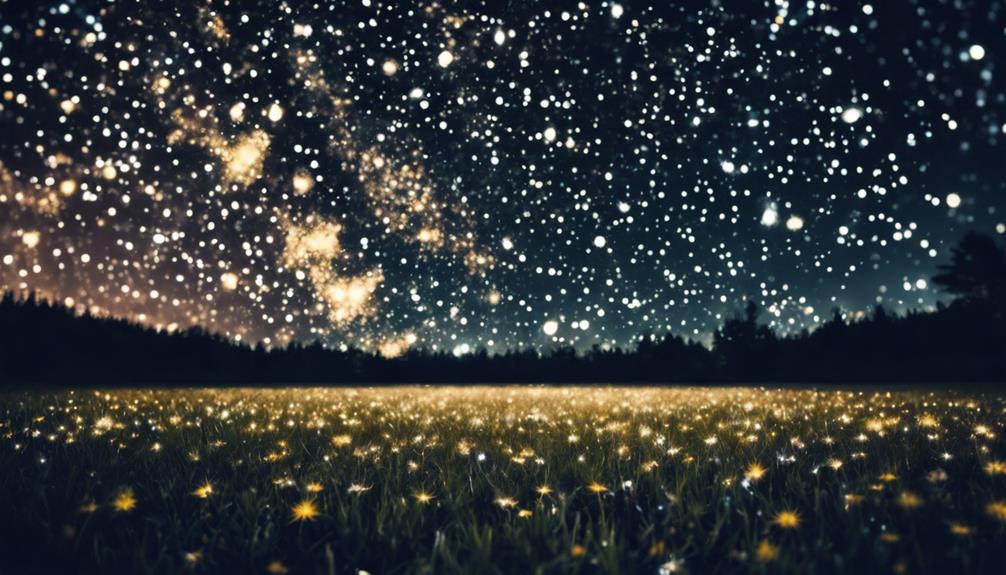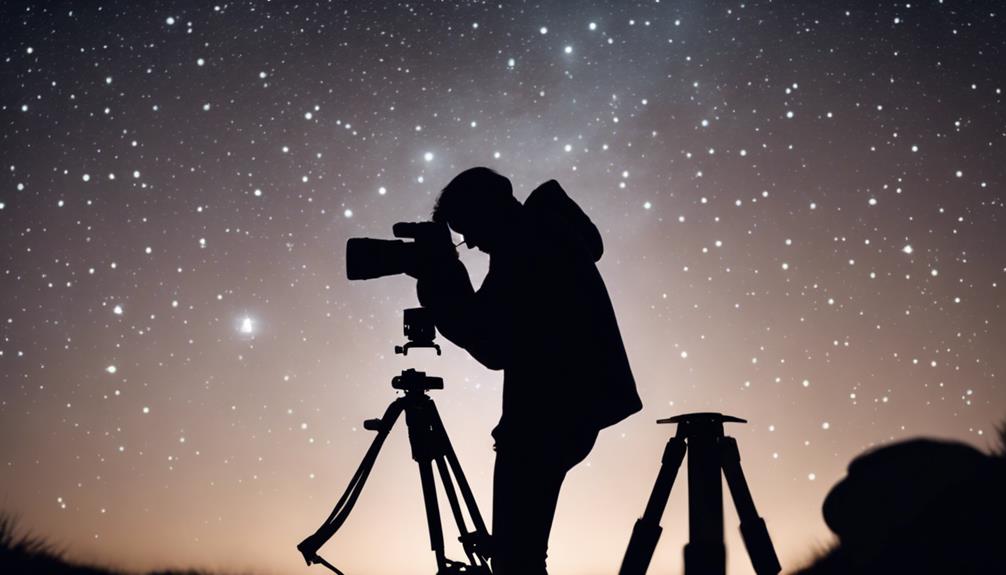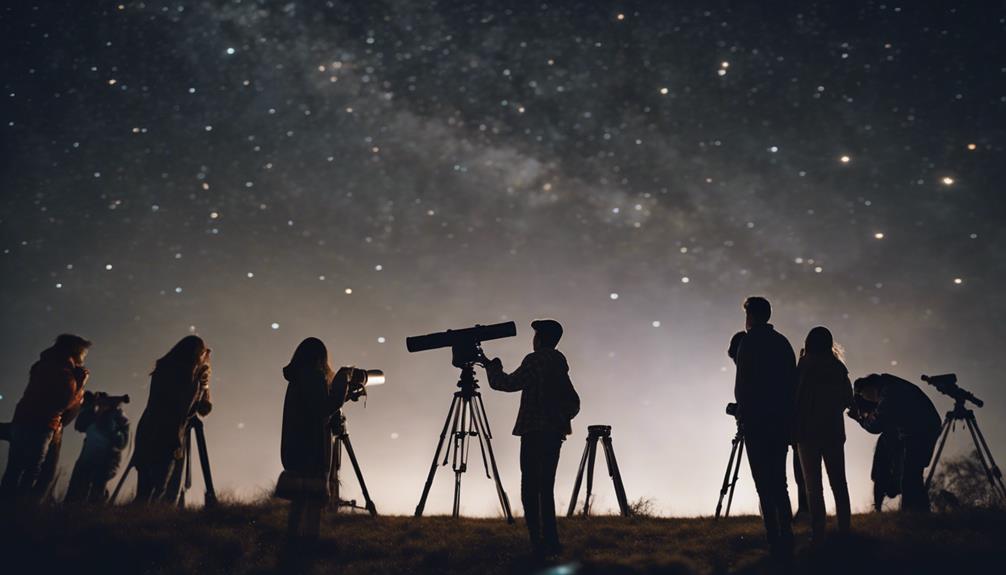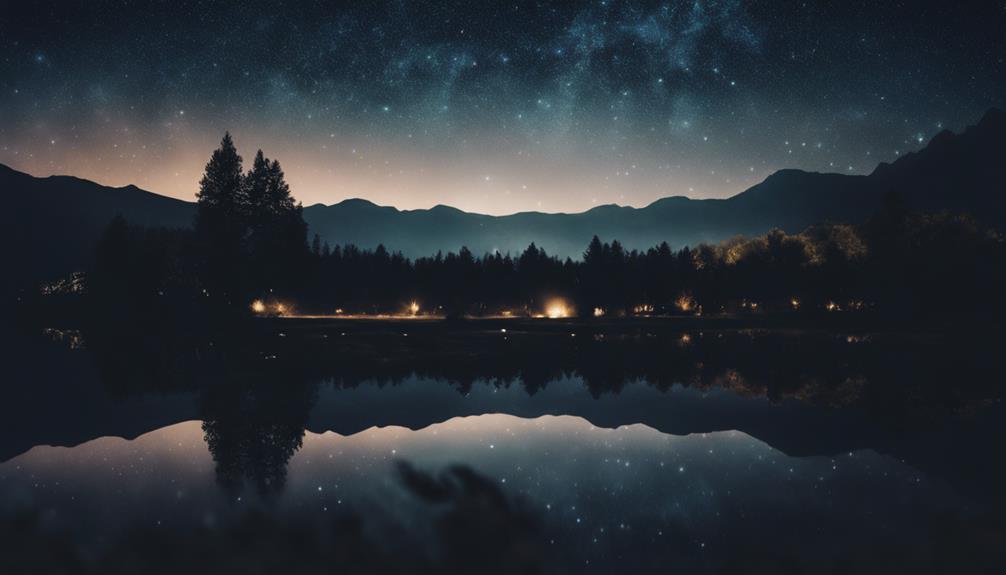Begin an amazing journey to witness the dazzling night sky at Dark Sky Parks worldwide, from Glacier National Park to Joshua Tree. Conservation efforts guarantee pristine stargazing views. Remember key photography tips: tripods, timers, and understanding camera settings for stunning astrophotography. Discover US favorites like Great Sand Dunes and Glacier National Park for unforgettable night skies. Grab a red flashlight for ideal stargazing without disrupting nature. Celestial events and wonders await under the dark, starry skies. Get ready to explore these magnificent locations further to enhance your stargazing experiences.
Key Takeaways
- Visit Dark Sky Parks for unparalleled stargazing experiences.
- Bring a red flashlight to preserve night vision.
- Engage in guided night sky programs for astronomical insights.
- Capture celestial wonders with astrophotography in these parks.
- Adhere to lighting regulations to protect the pristine night environment.
Dark Sky Parks Worldwide

Exploring Dark Sky Parks worldwide reveals a mesmerizing journey through over 200 certified locations, spanning 22 countries and 6 continents, offering unparalleled stargazing experiences. Among these International Dark Sky Parks, Glacier National Park stands out for its breathtaking night sky views. The park's efforts to reduce light pollution have created an ideal environment for observing the stars in all their glory.
Another remarkable destination is Joshua Tree National Park, renowned for its stunning nightscapes. Visitors can witness the sky come alive with twinkling stars, immersing themselves in the beauty of the universe.
Great Sand Dunes National Park is also a must-visit for those seeking a celestial spectacle. The park's designation as an International Dark Sky Park ensures minimal light pollution, allowing for clear views of the starry night sky.
These Dark Sky Parks not only provide unforgettable experiences for visitors but also play an important role in promoting conservation efforts and protecting the natural wonders of the night sky.
Conservation Importance of Dark Skies
Preserving the pristine darkness of our skies is paramount for safeguarding the natural, cultural, and historical treasures that lie beneath the starry canopy. The International Dark-Sky Association, with over 200 certified Dark Sky Places globally, emphasizes the conservation of these areas to protect citizens' right to enjoy the night sky. These designated places adhere to strict guidelines on outdoor lighting, light pollution reduction, and stewardship practices, promoting authentic nighttime experiences and preserving ecologically sensitive areas.
From International Dark Sky Parks to Urban Night Sky Places, each certification category plays a crucial role in enhancing the quality of outdoor lighting and connecting people with the wonders of the night sky. Flagstaff, Arizona, as the first International Dark Sky City, has set a precedent for implementing best lighting practices and introducing innovative conservation initiatives. By prioritizing the conservation of dark skies, we guarantee that future generations can continue to marvel at the beauty of starry nights while protecting our environment and heritage.
Night Sky Photography Tips

Venturing into the realm of night sky photography opens up a world of celestial wonders waiting to be captured through the lens. To achieve stunning night sky images, it's important to equip yourself with the right tools and knowledge. Essential equipment like tripods for stability, timers for precise shots, and red light sources to preserve night vision are essential. Understanding camera settings such as f-stop, shutter speed, and ISO is essential for mastering the art of astrophotography. Additionally, considering moon phases and the impact of moonlight on your shots is key to planning successful photography sessions under the night skies.
When seeking ideal locations for your night sky photography adventures, Dark Sky Parks, which offer minimal light pollution, are perfect for capturing the beauty of celestial objects in all their glory. By immersing yourself in these dark sky havens, you can enhance your astrophotography skills and create truly breathtaking images of the cosmos.
Top US Dark Sky Parks
Immersing oneself in the celestial wonders of the night sky becomes an unforgettable experience at the top US Dark Sky Parks.
From the stunning views of the night sky with minimal light pollution at Joshua Tree National Park in California to the International Dark Sky Park designation of Great Sand Dunes National Park in Colorado, these parks offer unparalleled stargazing opportunities.
Glacier National Park in Montana isn't only celebrated for its breathtaking beauty but also for being a designated International Dark Sky Park, making it a prime location for observing celestial events.
Chiricahua National Monument in Arizona boasts dark skies perfect for stargazing, while Arches National Park in Utah provides visitors with clear, dark skies for immersive stargazing experiences.
These remote locations offer unparalleled night sky views, free from the distractions of urban light pollution, allowing visitors to connect with the universe in ways that are truly awe-inspiring.
Visiting Dark Sky Parks: Tips & Tricks

When visiting Dark Sky Parks, remember to bring a red flashlight to preserve your night vision. These national parks offer unparalleled stargazing experiences due to their dark skies with minimal light pollution. Witnessing celestial events and astronomical wonders under these pristine conditions is truly mesmerizing. The Milky Way and constellations shine brightly, enchanting visitors with their brilliance.
To make the most of your visit, take part in guided night sky programs and astronomy events organized within Dark Sky Parks. These programs provide valuable insights into the night sky, enhancing your stargazing experience. Additionally, adhere to the lighting regulations in place to protect the natural night environment and ensure everyone can enjoy the splendor of the dark skies.
Frequently Asked Questions
What Month Is Best for Stargazing?
For stargazing enthusiasts, the best month can vary based on celestial events and local conditions. Summer months like June, July, and August often offer clear skies. Winter may provide longer nights for viewing. Checking local events and calendars helps plan ideal stargazing experiences.
What National Park Has the Best Stargazing?
When it comes to the best stargazing experience, Death Valley National Park in California stands out. The remote location and minimal light pollution create an unparalleled view of the night sky, making it perfect for stargazing enthusiasts.
What Is the Difference Between Dark Sky Reserve and Dark Sky Sanctuary?
The distinction between a dark sky reserve and a dark sky sanctuary lies in their focus: reserves balance human activities with dark sky protection, while sanctuaries prioritize minimal human impact to safeguard night skies and natural habitats.
Where Is the Darkest Sky in the United States?
In the United States, the darkest sky can be found in the Natural Bridges National Monument in Utah. Witnessing the celestial wonders there is truly a mesmerizing experience that leaves you in awe.
Conclusion
As I gaze up at the vast expanse of the night sky from a dark sky park, I'm reminded of how small we're in this universe. Yet, in our insignificance, we find beauty and wonder in the stars above.
It's a humbling experience that brings a sense of peace and connection to something greater than ourselves. So next time you have the chance, head to a dark sky park and be amazed by the magic of the cosmos.

